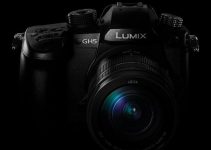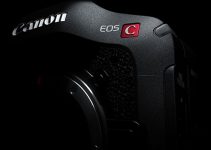If you ask any filmmaker which mirrorless camera you should buy, it’s very likely that they will recommend one referring to the Sony brand. For the past few years, the Japanese behemoth has amassed a large fan base over their Alpha mirrorless line, which includes favorites such as the A6500 and the A7S II. While many regard the two counterparts as the same product in different bodies, both cameras possess distinctive features that make each better in various aspects of the creative process.
Filmora Video Editor team recently conducted a side-by-side comparison between the Sony A6500 and A7S II in an attempt to determine which device is better for photo and/or video use cases. For the test, each camera was configured with the same shutter speed, ISO, white balance, picture profile, and lens to ensure a fair comparison.
Before making any solid conclusions about the cameras, it’s important to note the fundamental differences between each product. To start off, the Sony A6500 costs $1,198 whereas the Sony A7S II is priced at $2,398.
Furthermore, not only is the A6500 smaller and lighter, but it possesses a cropped APS-C sensor, leading to a narrower field of view. This is in contrast to the A7S II which sports a full-frame 35mm sensor, a format that many professionals seek in their cameras.
Many experts would argue that with a bigger camera sensor, the A7S II should be the end-all or be-all of photos and videos. However, as the video explains, this is not entirely the case.
Surprisingly, when it comes to taking photos, the lighter and less-expensive Sony A6500 trumps its bigger brother, the A7S II. This is mainly due to the A6500’s 24.4 megapixels, whereas the A7S II only has 12.2 megapixels.
With a higher number of megapixels, the A6500 can capture more image detail. This can be seen in the raw photo comparison, where zooming up to 800% reveals that the A6500 produces sharper and more defined edges than the A7S II.
For photographers shooting fast-moving subjects such as in sports, the A6500 would also be the superior camera thanks to its burst mode of up to 11 frames per second. This is much higher than the 5 frames per second featured on the burst mode of the A7S II.
While the A6500 can show its strengths in professional photography, the A7S II is definitely the superior choice when it comes to shooting video. Firstly, the design of the A7S II lends itself towards videographers. Its larger and heavier build over the A6500 allows for a firm grip that aids in trying to get steady video while shooting handheld.
Plus, the A7S II features a headphone jack whereas the A6500 does not. With the headphone jack, you’re able to monitor the quality of your recorded audio, rather than merely guessing by looking at the on-screen audio meter.
Not only can the A7S II support higher quality full-frame lenses, but it can also use APS-C lenses. This is thanks to its built-in APS-C mode wherein the camera will crop its sensor as if it were an APS-C lens, allowing to use lenses that you might have utilized with previous Sony cameras.
Beyond that, the quality of video from the A7SII seems to outweigh that of the A6500. When shooting at 24 frames per second in 4K, the A7SII can produce moving images with more precise color accuracy compared to its more compact counterpart which tends to produce warmer colors right off the bat.
Regarding slow motion capabilities, the A7S II does falter slightly with increased moiré and aliasing when shooting at 1080p 60 and 120 frames per second. However, the quality of footage attained from the A7SII is more than usable. Even with the A7S II’s minor faults in slow motion, these imperfections can be justified with its better design and ergonomics over the A6500.
One aspect in modern mirrorless cameras is their low-light capabilities, especially when it comes to shooting video. Of the two cameras mentioned in this article, the A7S II is the clear winner in this regard. After all, there’s a good reason why the original A7S was the pioneer of mainstream low-light mirrorless cameras.
With an insane ISO range between 50 to 409,600, run-and-gun shooters will rejoice with the ability to shoot their subjects even with little available light. While noise is definitely visible at ISO 4000 and above, the noise level is much lower than what is found in the A6500 footage, especially at higher ISOs.
Based on the video, it’s safe to conclude that each camera has its own strengths and weaknesses that make each the best option in its field. If shooting video is your number one priority, the A7S II is the camera for you. With its exceptional low-light performance, a sturdy build, and filmmaker-focused features, the A7S II delivers the quality you need for your video projects.
On the other hand, if you’re a photographer or beginner filmmaker, the A6500 should definitely be on your wish list. From a photographers standpoint, the higher megapixel count and compact form factor allow you to take the A6500 wherever you go while producing sharp, detailed images. As for beginner filmmakers, the video captured on the A6500 stacks well against the A7S II, all with enough quality to awe the audiences with the right image composition.
[source: Filmora Video Editor]
Order Links:
Sony Alpha a7S II Mirrorless Digital Camera (Body Only) (B&H, Amazon)
Sony Alpha a6500 Mirrorless Digital Camera (Body Only) (B&H, Amazon)
Disclaimer: As an Amazon Associate partner and participant in B&H and Adorama Affiliate programmes, we earn a small comission from each purchase made through the affiliate links listed above at no additional cost to you.
Claim your copy of DAVINCI RESOLVE - SIMPLIFIED COURSE with 50% off! Get Instant Access!





